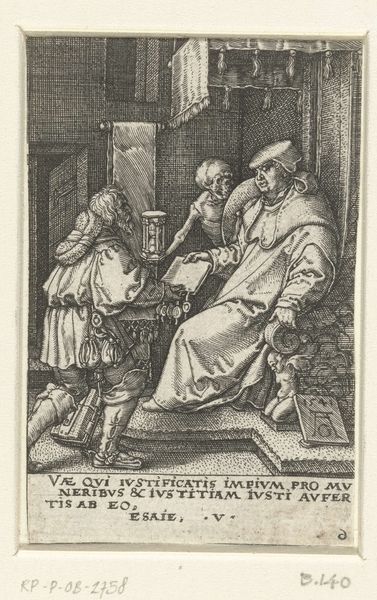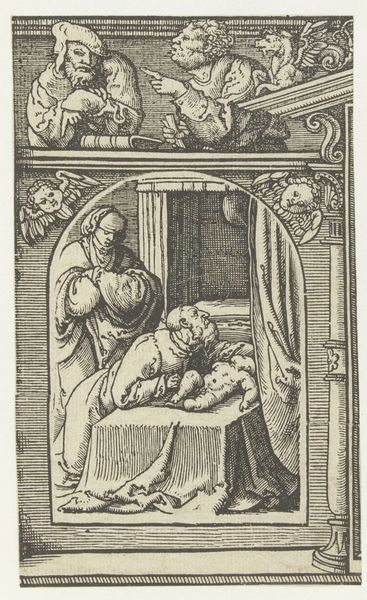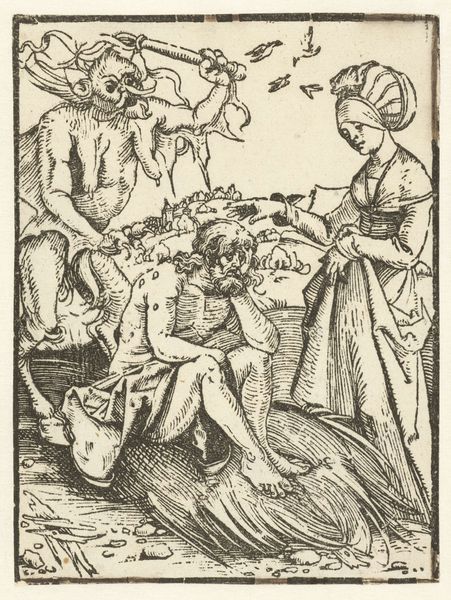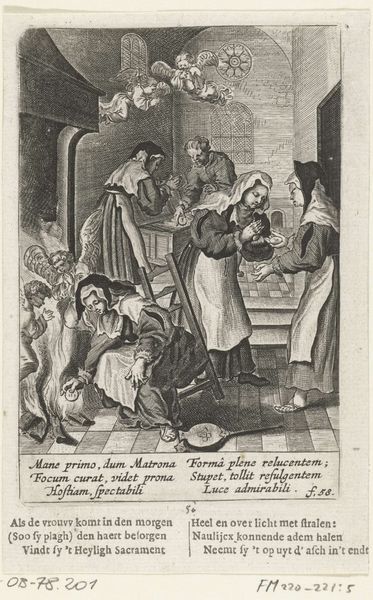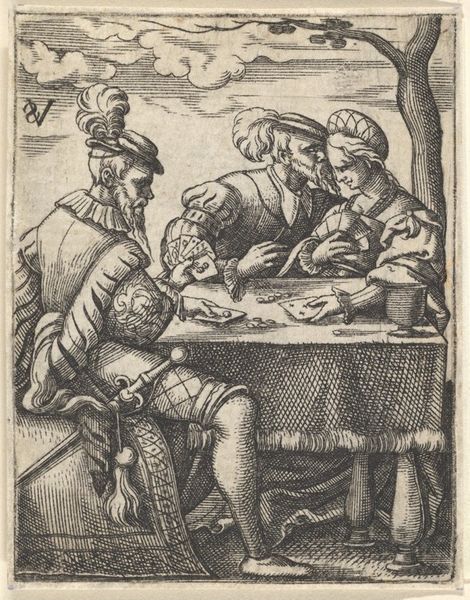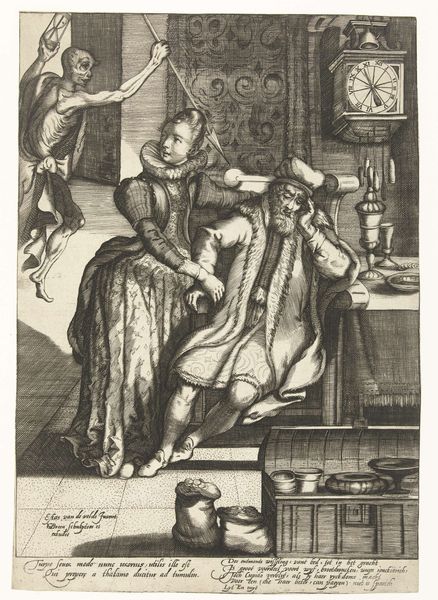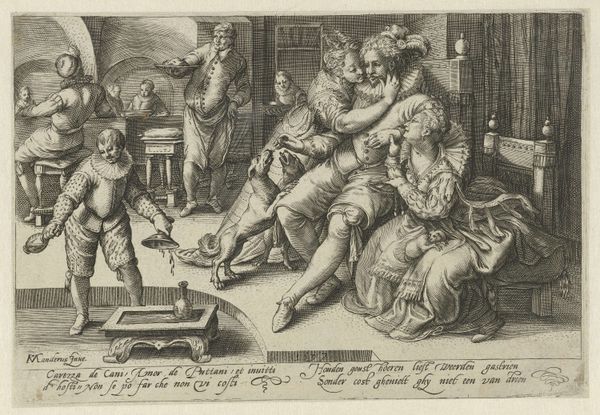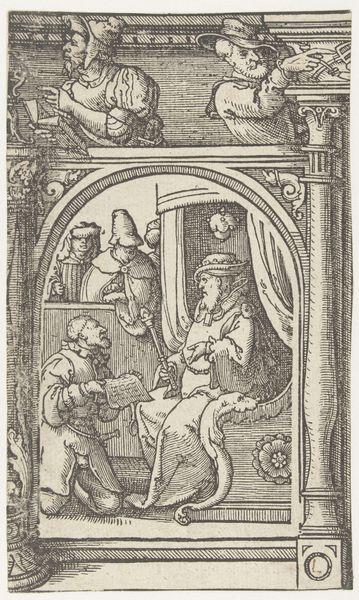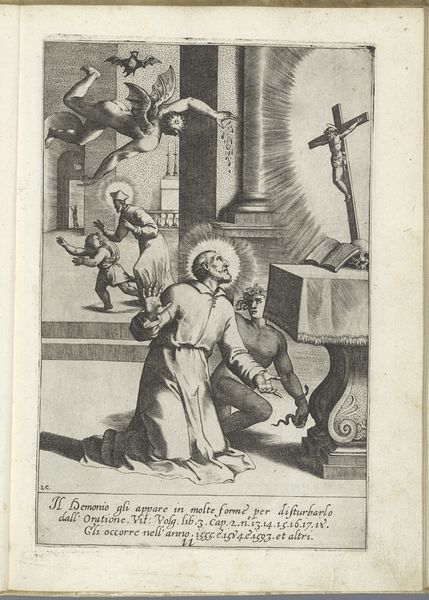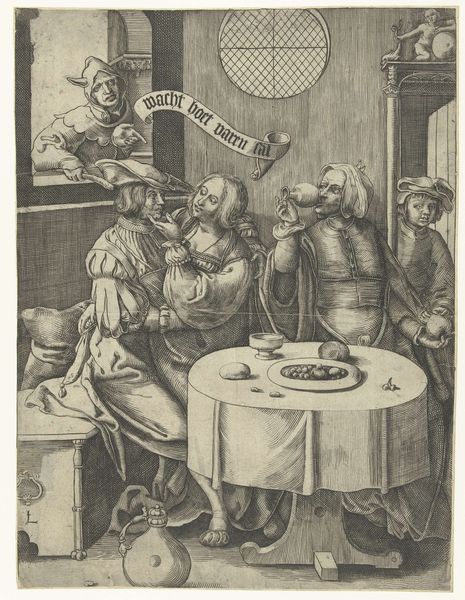
print, engraving
#
narrative-art
#
baroque
#
dutch-golden-age
# print
#
figuration
#
genre-painting
#
engraving
Dimensions: height 110 mm, width 80 mm
Copyright: Rijks Museum: Open Domain
Curator: Here we have "Man in bordeel wordt beroofd," or "Man in Brothel Being Robbed" by Gillis van Breen, an engraving dating back to around 1585 to 1610. It is currently held at the Rijksmuseum. Editor: It’s fascinating how the stark, almost clinical lines of the engraving create this atmosphere of underlying tension. The composition seems deliberately claustrophobic. Curator: Genre paintings like this, particularly prints, were incredibly popular. They offered a window into contemporary life but were also often laden with moralizing messages, offering social commentary for a broad audience. It played a public role. Editor: I see that clearly in the faces. Look at the leering expression of the older man. And then note the precise articulation of clothing, those detailed ruffs – almost like a catalogue entry for status. How meticulously defined those textures are, lending weight and substance to the narrative! Curator: Exactly, details of dress communicated social standing, vice, even political allegiance at this time. The image would trigger social associations in ways that are easily lost to contemporary viewers. We must ask if the artist intended us to critique these interactions? What narrative function does each character serve in relation to contemporary audiences? Editor: While the scene’s context provides that backdrop, my eye keeps circling back to the almost palpable sense of touch. The clumsy embrace, the unseen but deeply suggested hand reaching into his pocket… the lines give these figures weight. The tension in those curves... Curator: This type of visual storytelling was quite prevalent, warning against excessive indulgences, especially those threatening social and economic ruin. There was an anxiety in that society over the moral dimensions of newly emergent consumer culture that engravings such as this directly engaged. Editor: Seeing it laid bare, analyzed into neat, etched lines, certainly gives one much to consider beyond its face value. Curator: I find it incredibly valuable to explore artwork from the context in which they are situated within society. It adds so much to my experience. Editor: Yes, that historical lens opens another way of approaching how forms carry and deliver significance.
Comments
No comments
Be the first to comment and join the conversation on the ultimate creative platform.
